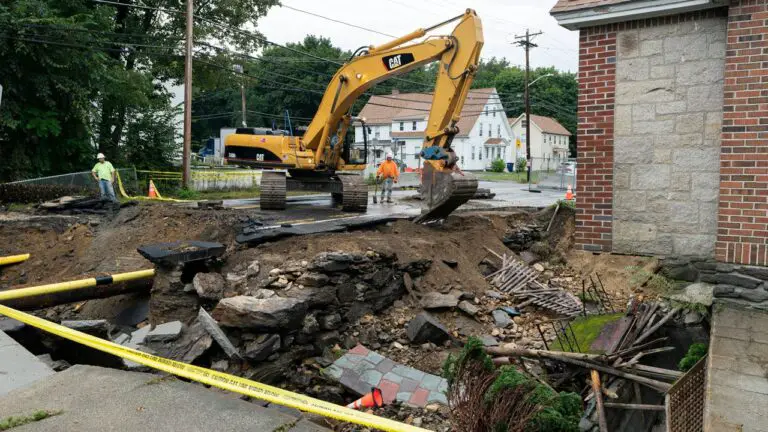Flood Concerns Emerge as Massachusetts Dams Show Their Age
Massachusetts recently bore the brunt of severe floods, thrusting aging dams into the limelight. Worries now swirl around the resilience of these structures as they grapple with the increasing ferocity of climate change-driven storms.
The Old Meets the New
Massachusetts, nestled in New England, houses thousands of dams, some dating back centuries. Initially constructed for tasks like powering textile mills, water storage, or farm irrigation, these dams now face a modern challenge. They weren’t designed to withstand the kind of extreme storms that climate change has unleashed.
“When they were built, the climate was different. The design storms were different,” explained Robert Kearns, a climate resilience specialist with the Charles River Watershed Association.
Leominster’s Close Call
Leominster, Massachusetts, recently experienced nearly 11 inches of rain within hours. This deluge pushed at least two of the city’s 24 dams to the brink of failure, prompting authorities to urge residents to evacuate temporarily.
“The culverts, the dams, they were not built to handle the volume of water we’re seeing now and will continue to see in the future,” added Kearns.
Growing Concern Across New England
A federal database lists nearly 4,000 dams in New England, with 176 of them deemed high-hazard structures in either poor or unsatisfactory condition. If these dams were to fail, they pose significant risks to downstream communities, roads, neighborhoods, and critical infrastructure like water treatment plants.
Rising Numbers and Safety Lapses
In 2022, an investigation by The Associated Press revealed an alarming trend – the number of high-hazard dams nationwide had been steadily increasing, surpassing 2,200, a substantial jump from three years prior. However, the actual number could be higher, as some states don’t track this data, and federal agencies often withhold dam condition details.
The 2019 AP investigation identified various dam issues, including leaks suggesting internal damage, unaddressed erosion, animal burrow holes, and extensive tree growth, which can destabilize earthen dams. In some instances, inspectors flagged spillways that were too small to handle the increased water from more intense rainstorms.
Challenges and Calls for Action
Historically, dam safety hasn’t been a top priority for policymakers. Many states run their dam safety programs on limited budgets, and repairs can drag on for years. Advocates argue that many programs lack transparency, leaving communities unaware of the potential risks posed by upstream dams. Others criticize dam safety officials for being slow to acknowledge the threat of climate change.
Emily Norton, executive director of the Charles River Watershed Association, voiced concerns: “We are not seeing a shift in mindset related to dams that we should be seeing in light of the massive changes we’re seeing from climate change in terms of particularly more extreme storms. We think there should be much more sense of urgency about dam assessment and dam removal.”
Assessing Dam Safety
Christine Hatch, a hydrogeologist at the University of Massachusetts Amherst, stressed the need for a statewide dam assessment in Massachusetts to determine how limited resources should be allocated. She pointed out, “The reality of climate change is that whatever we thought was safe enough when we built it isn’t safe enough anymore.”
Such an assessment is crucial to distinguish between essential and hazardous dams.
A History of Dam Failures
New England has witnessed numerous dam failures over the years, including more than 50 in New Hampshire, about 70 in Vermont, and five in Rhode Island during a 2010 storm. These incidents have led to reevaluations of dam spillways and revealed that many high-hazard dams may not withstand severe storms.
Government’s Response
Massachusetts Governor Maura Healey emphasized the importance of monitoring dams across the state, especially in light of climate change. She called for federal funding and continued investments in resilience and infrastructure to address the growing threat of storms.
Aging Dams Pose Risks
One example of a vulnerable dam is the Barrett Park Pond Dam in Leominster, dating back to the 1800s. Inspected in 2021 and found to be in poor condition, the dam received a grant for repairs but was still in the planning phase when flooding struck. While the dams held this time, it serves as a reminder of the need for constant vigilance and maintenance to ensure the safety of critical infrastructure.

